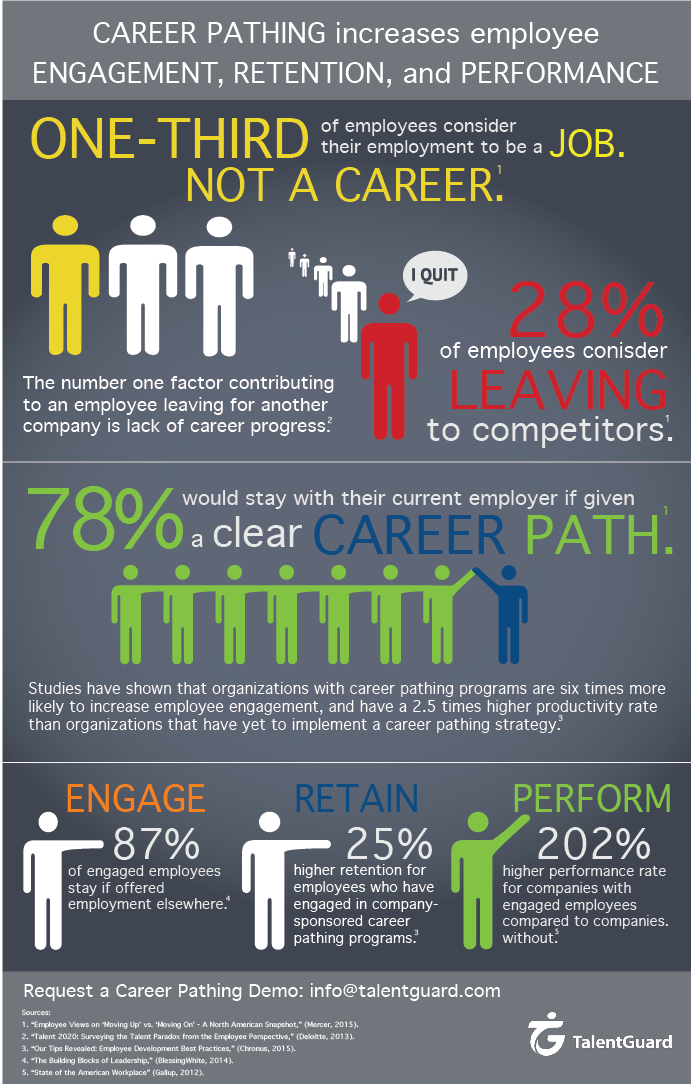Key Elements for a Successful Career Path Navigation

Key elements of a successful career path navigation offers two benefits that are essential for employee retention: direction and motivation. But what makes the plan well-designed? What makes it successful? Each employee’s individual plan will look different, but they should all include these key elements:
A Thorough Self-Assessment
Does the employee most prefer working with objects or people? What are his strengths and weaknesses? Is she detail-oriented or a big-picture thinker? Does the employee work well under pressure or does he prefer a calm work environment? These questions may sound simple, but knowing the answers can go a long way toward ensuring the career path plan is successful.
Other questions to consider: What are the employee’s motives for working? What people, things, and experiences make life meaningful to her? What are his interests? An effective career path plan is built with the employee’s values firmly in mind.
Goals
Goals are the centerpiece of a useful career path plan, but a well-designed plan includes more than just a list of short and long-term career goals. In addition to knowing whether the employee wants to end up in a management position or become an expert in a specific topic, a successful career path plan also should consider: whether he wants to carve out time to pursue other, non-work-related passionate interests; whether travel or volunteer work is important to her; and whether continuing education in his or her chosen field is of value. Understanding and including personal objectives in the career path plan will make it more effective.
Organizational Opportunities
A successful career path plan helps move an employee from where she is to where she wants to be. In order to do this effectively, it must consider the organizational opportunities available within the company and the training necessary to make any moves. A thorough understanding of the core competencies and job descriptions of each position in the career path plan ensures the employee has the tools to move into each new position.
To see how TalentGuard can help you implement successful career path navigation in your organization, request a demo today.
Managing Career Path Goals
Managing career path goals The organizational goal of successful career pathing and career development is to have productive, engaged employees who choose to stay with your company, even if they have the opportunity to go elsewhere. The overall goal of each individual career path plan, however, is more complex. Helping employees state and achieve those […]
Career Path Development Journey Starts Here
Your career path development journey starts here. A common reason an employee will leave for a competitor is lack of career progress. An explanation for this fact is that employees desire to be a part of something that will inspire them to think about a destination ahead. Just the simple thought of progress toward that destination will spark […]
Career Pathing Increases Engagement, Retention, and Performance
Career Pathing Increases Engagement, Retention, and Performance In today’s competitive business landscape, organizations are constantly seeking ways to increase employee engagement, retention, and performance. One of the most effective strategies to achieve these goals is through career pathing. Career pathing provides employees with a clear roadmap for their professional growth, aligning their personal ambitions with […]


